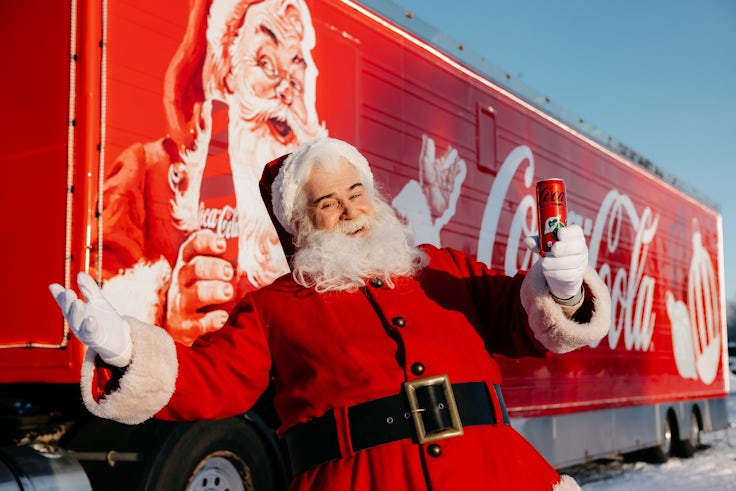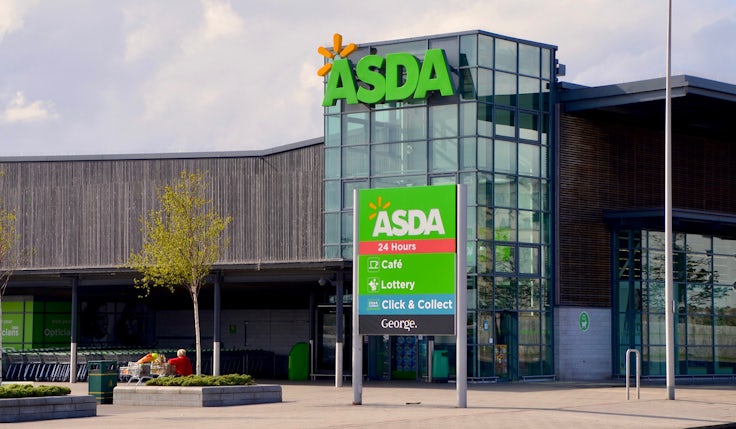Emotional advertising, connected TV, Christmas ads: 5 interesting stats to start the week
We arm you with all the numbers you need to tackle the week ahead.
Emotional advertising boosts brands’ pricing power by 40%
Emotional ads can boost brands’ pricing power by 40%, finds research from brand tracking platform Tracksuit in partnership with Google, Ipsos and the IPA.
The report examines the impact that emotionless advertising can have on brand growth and concludes advertising that includes emotion is significantly more effective than rational advertising.
As well as persuading consumers that brands are worth paying more for, advertising with emotion is more likely to gain traction on social media, with the research finding this type of advertising is 27% more likely to go viral and be shared.
Emotion is also effective in driving “fame”, meaning earned impressions or media. Emotional campaigns are nearly three times as effective as rational campaigns in generating organic impressions and media. The authors of the report argue this means if brands are looking to drive awareness as a goal, then emotional advertising will be a lot more effective than rational.
Source: Tracksuit, Google, Ipsos and the IPA
Advertising on premium CTV content drives brand recall
 Ads placed alongside premium, high-quality content on connected TV (CTV) platforms significantly boosts attention and brand recall, according to insights from Sky Media, Vevo and NBCUniversal.
Ads placed alongside premium, high-quality content on connected TV (CTV) platforms significantly boosts attention and brand recall, according to insights from Sky Media, Vevo and NBCUniversal.
During the IAB’s CTV Upfronts last Thursday (24 October), the three companies discussed how advertising on quality content drives impact.
Vevo, in partnership with Amplified Intelligence, conducted research using facial-tracking set-top boxes in 150 UK households to assess the effect of YouTube content quality on attention. The study revealed that premium content drives 40% more active attention compared to non-premium content, meaning viewers are more engaged with ads on high-quality content for longer periods.
Vevo defines premium content based on Barb’s “fit for TV” standards, which include editorial oversight, regulatory compliance, and a safe viewing environment. Ads placed within premium content saw 63% of the ads actively viewed and 21% passively viewed, resulting in 84% total viewability.
Vevo’s research shows that attention among 18-to-34-year-olds is 39% higher when watching Vevo’s premium content versus non-premium, and the platform reaches 62% of the UK’s 18-34 population.
NBCUniversal echoed these findings with a global study involving over 10,000 interviews across 10 markets. The study concluded that “premium environments accelerate brand success”.
According to NBCUniversal, 69% of respondents are more likely to notice a brand when it appears within premium content, and a similar percentage said they’re more inclined to consider purchasing from that brand in such settings.
Source: Vevo and NBCUniversal
Almost three in five consumers ‘love’ Christmas ads
 Almost three in five (59%) consumers say they “love” Christmas ads, up from 51% in 2023, according to data from Kantar.
Almost three in five (59%) consumers say they “love” Christmas ads, up from 51% in 2023, according to data from Kantar.
A similar figure (56%) claim they’re “really looking forward to seeing Christmas ads on TV”, up from 48% last year.
Department store John Lewis is the brand with the most anticipation around its Christmas ad. Coca-Cola, which has been running its ‘Holidays Are Coming’ ad since 1995, is the second most anticipated festive ad. Kevin the Carrot has helped Aldi claim the spot of third place for most anticipated Christmas ad.
‘Christmas spirit’ was the factor most likely to positively impact how consumers feel about an ad, with over half (53%) of people saying this would positively impact their view.
The levels of “love” for Christmas ads is the highest since the research began, but despite this excitement, many are annoyed by perceived early festive ads. Around two thirds of people believe Christmas ads “appear too early”. Despite this, Kantar advises brands to work to build momentum around the festive season sooner rather than later.
Source: Kantar
Over half of UK exporters believe ‘brand Britain’ boosts sales
 Britain as a brand is highly valued by both the public and business leaders, suggests research from JKR and Ipsos in partnership with the British Chambers of Commerce.
Britain as a brand is highly valued by both the public and business leaders, suggests research from JKR and Ipsos in partnership with the British Chambers of Commerce.
The report examines what makes Britain distinctive as a nation and how that influences the brands and businesses tied to it.
Brand Britain can provide a boost to UK businesses, research suggests, with 52% of the exporters surveyed stating their association with Britain is a key driver of growth. Only 11% of exporters say their association with Britain hinders their business.
Around two-thirds (64%) of businesses believe that Britain has cultural influence. Most business leaders do think the UK’s influence abroad will be reduced over the next 20 year, however, over half (53%) think the country’s influence will remain significant.
Turning to consumers, more than one in three (35%) say they would go out of their way to buy British brands. Almost three in five (59%) say Great Britain produces high-quality brands, with 69% trusting British brands and 70% feeling good about purchasing them.
Almost two in five (39%) consumers say they would be prepared to pay more for brands from Britain.
Source: JKR, Ipsos and British Chambers of Commerce
Consumer confidence continues to fall in the run up to Christmas
 Despite consumer confidence building gradually between April and September this year, it has fallen for the second month in a row, according to GfK’s Consumer Confidence Index for October.
Despite consumer confidence building gradually between April and September this year, it has fallen for the second month in a row, according to GfK’s Consumer Confidence Index for October.
The overall measure of consumer confidence fell one point to –21, an eight-point decline since August, but still stronger than last October’s -30.
This is bad news for marketers, who are in the crucial golden quarter with Black Friday and Christmas around the corner.
Consumer confidence in the general economic situation fell five points to –42, while confidence in personal finance situations over the last 12 months fell one point to –10.
In August, overall confidence was at its highest level since September 2021 and had been on an upward trajectory since April. However, this is no longer the case despite headline inflation falling in October.
Source: GfK








